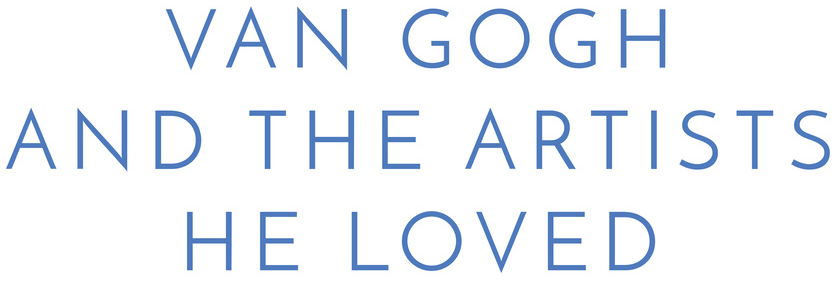Notes: Afterword
Notes for the Text
“Les Isolés”: G-Albert Aurier, “Les Isolés: Vincent van Gogh” (Mercure de France, January 1, 1890, pp. 24-29). In Susan Alyson Stein, Van Gogh: A Retrospective, edited and translated by Susan Alyson Stein (New York: Hugh Lauter Levin Associates and Macmillan, 1986), pp. 181-82, 191-93. “A link in the chain”: Letter to Theo van Gogh, May 20, 1888. Vincent van Gogh, The Letters, edited by Leo Jansen, Hans Luijten, and Nienke Bakker. Amsterdam 2009 (Digital edition). www.vangoghletters.org. Letter 611. Dismissed from the Paris branch: Van Gogh quarrelled with the managers at Goupil and was dismissed from the Paris branch because he took leave to visit his family in Etten, the Netherlands, without permission. Goupil’s Montmartre branch: Goupie & Cie became Boussod, Valadon & Cie in 1884. “Now, myself as a painter”: Letter to Theo van Gogh, May 3, 1889. Van Gogh, op. cit. www.vangoghtheletters.org. Letter 768. “Dazzling symphonies”: Aurier, op. cit. The young Dutch painter’s death: Octave Mirbeau, “Vincent van Gogh,” L’Écho de Paris, March 31, 1891. In Stein, op. cit., pp. 181-82, 191-93.
360 paintings and numerous drawings: The precise number of works in Theo’s possession after Van Gogh’s death is hard to determine. The most accurate record of the paintings seems to be the inventory compiled by Jo’s brother, Andries Bonger, which lists 364 paintings. Catalogue des oeuvres de Vincent van Gogh, 1890, Van Gogh Museum, Amsterdam, b 3055V/1962. See Chris Stolwijk and Han Veenenbos, The Account Book of Theo van Gogh and Jo van Gogh Bonger (Amsterdam: Van Gogh Museum and Leiden: Primavera Pers, 2002), pp. 23–24. “Without saying much”: H. van de Velde, Gechichte meines Lebens, Munich 1986, p. 60. Cited in English in Walter Feilchenfeldt, “Vincent van Gogh and Early Modern Art,” in Roland Dorn, et al., Vincent van Gogh and Early Modern Art, 1880-1914, exhibition catalogue (Essen: Folkwang Museum and Amsterdam: Van Gogh Museum, 1990), p. 40. “The memory of Vincent”: Vincent van Gogh, Vincent van Gogh. Brieve naan zijn broeder, edited by Joanna van Gogh-Bonger (Amsterdam: Maatschappilj voor goede en goedkoope lectuur, 1914). “It took much time”: Jill Lloyd, Vincent van Gogh and Expressionism, exhibition catalogue (Amsterdam: Van Gogh Museum and New York: Neue Galerie, 2007), p. 19, n. 6, quoted in Feilchenfeldt, op. cit., p. 8.
“I found some”: Maurice de Vlaminck, Portraits Avant Décès (Paris: Flammarion, 1943), p. 31, cited in Carol Zemel, The Formation of a Legend: Van Gogh Criticism, 1880-1920 (Ann Arbor: UMI Research Press, 1980), p. 287. Vlaminck claimed he was referring to the 1901 exhibition, but Zemel believes Vlaminck was remembering incorrectly and was in fact thinking of the 1905 Salon des Indépendants retrospective of Van Gogh’s work. “The painter of the future”: Letter to Theo van Gogh, May 4, 1888. Van Gogh, op. cit. www.vangoghtheletters.org. Letter 604. The decisive factor: Stolwijk and Veenenbos, op. cit, p. 27. Cassirer put on ten Van Gogh exhibitions: Feilchenfeldt, op. cit., pp. 42-46. Meier-Graefe’s seminal 1904 book: Meier-Graefe’s book was published in English in 1908 under the title Modern Art. Julius Meier-Graefe, Modern Art Being a Contribution to a New System of Aesthetics (London: William Heinemann and New York: G. P. Putnam's Sons, 1908). Fifteen-page chapter: Lloyd, op. cit., p. 26. “We desire to create”: The text of the manifesto, Programm der Künstlergruppe Brücke, was carved into a woodcut in 1906. Quoted in Lloyd, op, cit., p. 34 and p. 138, n. 27. Emil Nolde: Ibid., p. 58. Fry’s landmark exhibition: For a discussion of the exhibition, see Anna Gruetzner-Robins, “A toi, Van Gogh!,” Carol Jacobi et al., Van Gogh and Britain, exhibition catalogue (London: Tate Britain, 2019), pp. 101–109. First three-volume edition: Vincent van Gogh, The Letters of Vincent van Gogh to his Brother, 1872-1886 (Further Letters…1886-1890), with a Memoir by his Sister-in-Law, edited by J. van Gogh-Bonger (London, Boston, New York: Constable, 1927-1929).
“For two days”: Van Gogh Museum Archives, b5951, quoted in Stolwijk and Veenebos, op. cit., p. 30. Spectacular retrospective: Judy Sund, Van Gogh, London and New York: Phaidon, 2002, pp. 323-24. Lifted spirits: Ibid., p. 325. Figure of Jackson Pollock: Ibid., p. 325. “Van Gogh is one”: Quoted in David Sylvester, Interviews with Francis Bacon (London: Thames & Hudson, 1987), p. 172. “I think that everything”: “Conversation with David Hockney,” in Hans den Hartog Jager, Hockney-Van Gogh: The Joy of Nature, Van Gogh, exhibition catalogue (Amsterdam: Van Gogh Museum, 2019), p. 150. Six-volume edition: Leo Jansen, Hans Luijten and Nienke Bakker, eds., Vincent van Gogh: The Letters. The Complete Illustrated and Annotated Edition, 6 vols., London and New York: Thames & Hudson, 2009. Van Gogh: The Life: Steven Naifeh and Gregory White Smith, Van Gogh: The Life (New York: Random House, 2011). “I can do nothing”: Letter to Theo van Gogh, on or about October 25, 1888. Vincent van Gogh, The Letters, edited by Leo Jansen, Hans Luijten, and Nienke Bakker. Amsterdam 2009 (Digital edition). www.vangoghletters.org. Letter 712.
